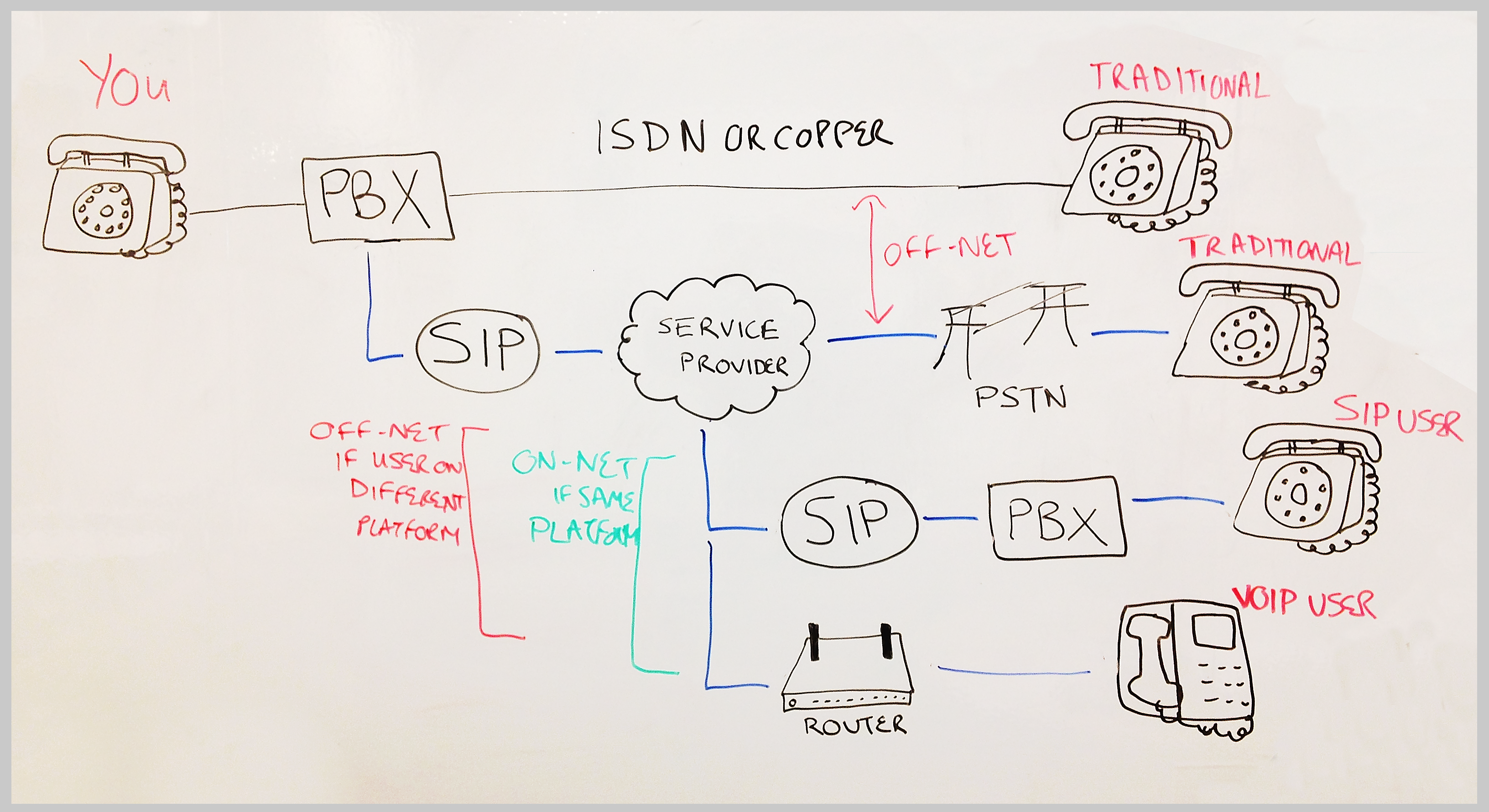
In this #TechinThree episode, Stephen Whitfield explains how SIP trunking works, what it is and how much calls can cost cost.
Many business owners are beginning to take advantage of the benefits that VoIP offers, but understandably some are reluctant to overhaul their existing legacy telephony equipment.
But there is a solution – SIP trunking. Providing a business has a PBX it can switch to SIP trunking to enable workers to make calls, both inbound and outbound, over the internet and experience significant cost savings.
In this #TechinThree episode, Stephen Whitfield explains how the technology works and how it can benefit growing businesses.
For reference, here’s a still of this week’s whiteboard!
Video transcript
Hello and welcome to another edition of #TechInThree
I’m going to talk to you today about SIP trunking, but more importantly what it is and how it works.
But before we do that, I think it’s worth looking at how a traditional, fixed line telephone call works, and that way it will give you a better understanding of how SIP can enhance what you currently have.
Let’s imagine you’re making call using a traditional telephone, and you decide you want to call someone who is outside of your business also using a traditional handset.
You dial your recipient and then your voice is, 9 times out of 10, likely to be carried through a PBX – an on-site telephone system to you and me which looks after your call traffic – before it is carried over a fixed line before it reaches its destination.
The fixed line can be either an analogue copper line or a digital ISDN line.
An ISDN line is a type of line that can carry multiple concurrent calls on multiple channels, both inbound and outbound. For example, that could have a capacity of 30 calls, allowing you to make 30 simultaneously calls, both internal and external, at any one time.
Imagine your PBX has reached capacity, but it is also quite new, you’re probably not too keen on a massive overhaul to a fully hosted VoIP solution. The problems with ISDN lines are that they are usually quite expensive to install and have installation lead-times
This is where SIP trunking becomes an attractive option.
SIP is basically a way of carrying voice calls over a data connection (such as superfast broadband or an Ethernet service) instead of a traditional phone line.
[Let’s imagine your ISDN lines are constantly in use and staff are unable to makes calls until channels become available. Your only option would be to place an order to upgrade the number of lines which could potentially take up to a month.
But if you add SIP technology, additional channels and numbers can be added in hours at a fraction of the cost of upgrading your traditional lines.
This basically gives you extra capacity to make more calls. It’s up to you then how many extra lines you need.]
So you make a call and it goes through the PBX, but at this stage it diverts over a SIP trunk and through to your service provider, before being delivered via the traditional PSTN to your recipient.
It’s important to remember, however, that these are classed as “off-net” calls as they are basically extensions, so they are chargeable at your normal call rate.
Now let’s say you want to make an inter-business call to someone located at another site, you would usually have SIP technology by the same provider added to the hardware at each site. This converts what is normally a traditional call into a VoIP call, so it can be transferred over a data connection.
The call would go through the PBX, through the SIP technology and into your service provider. The technology there recognises that you are wanting to call someone on the same SIP service, so it pushes it out via a managed connection to the SIP and then PBX at the other site, before being delivered to your recipient’s device.
The crucial point to remember here is that all these calls are classed as “on-net” – which in some cases can mean they are free of charge.
But what about if another of your offices is using a hosted voice platform on the same network as your SIP? Well, your call will again take another slightly different route.
It starts by going through the PBX, through the SIP technology and into your service provider. The technology again recognises it’s an internal call, but this time it recognises that it is being transferred to a VoIP device, so instead of going over another SIP and PBX it pushes it out via an on-site router.
Crucially, because the call is again converted into a VoIP call and they are using the same provider, these are also classed as “on-net” and can be free of charge.
If you are calling someone externally who is also using either a SIP or hosted VoIP platform, the call follows exactly the same path as these two (refer to drawing).
However, because they are using a different platform and service provider, for example, BT VoIP, it is important to note that these calls are classed as “off-net” – which means they are chargeable at your standard rate.
So I hope that has helped give you a little bit more clarity on SIP trunking.
Join us again next time for another episode of #TechinThree.
